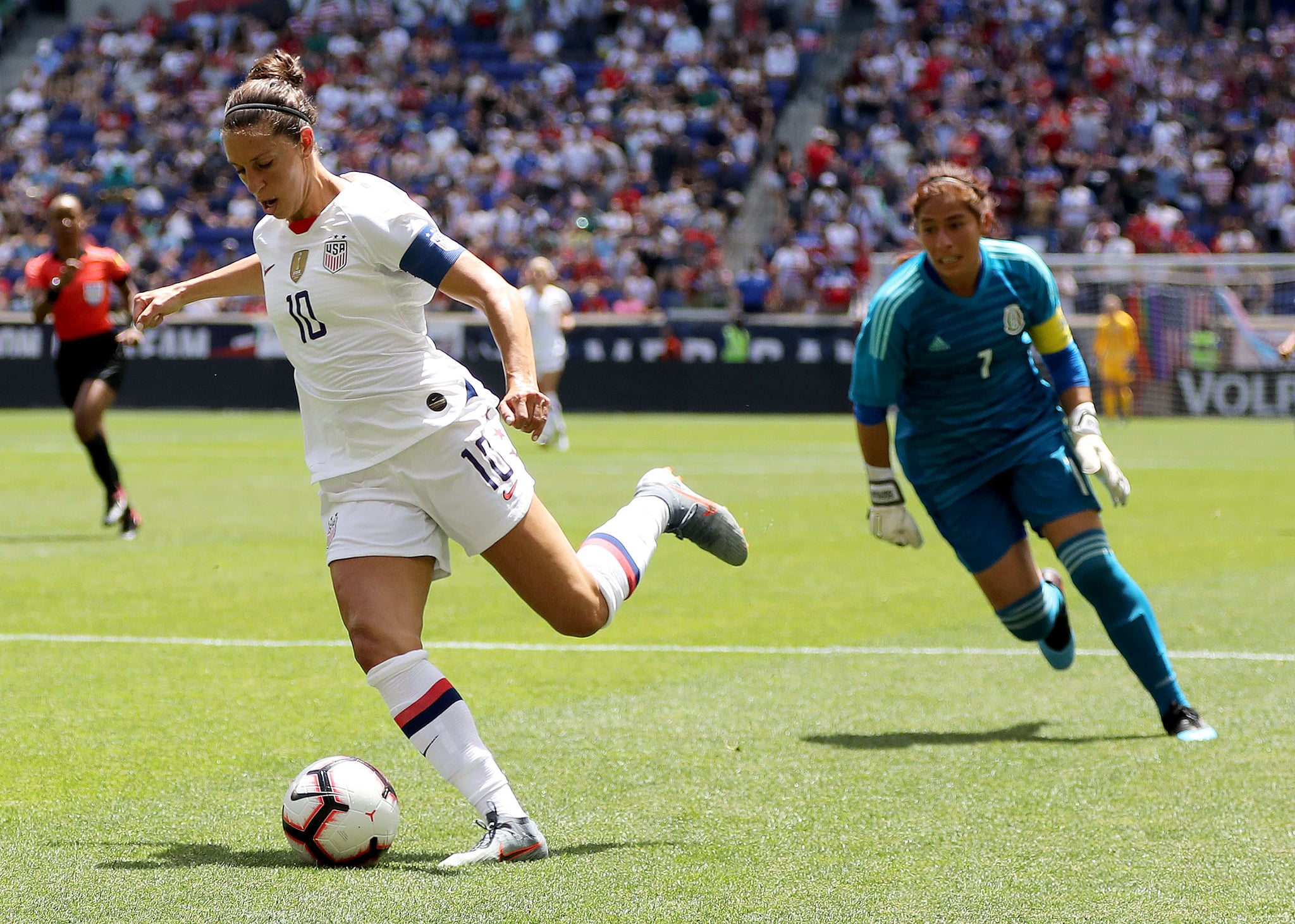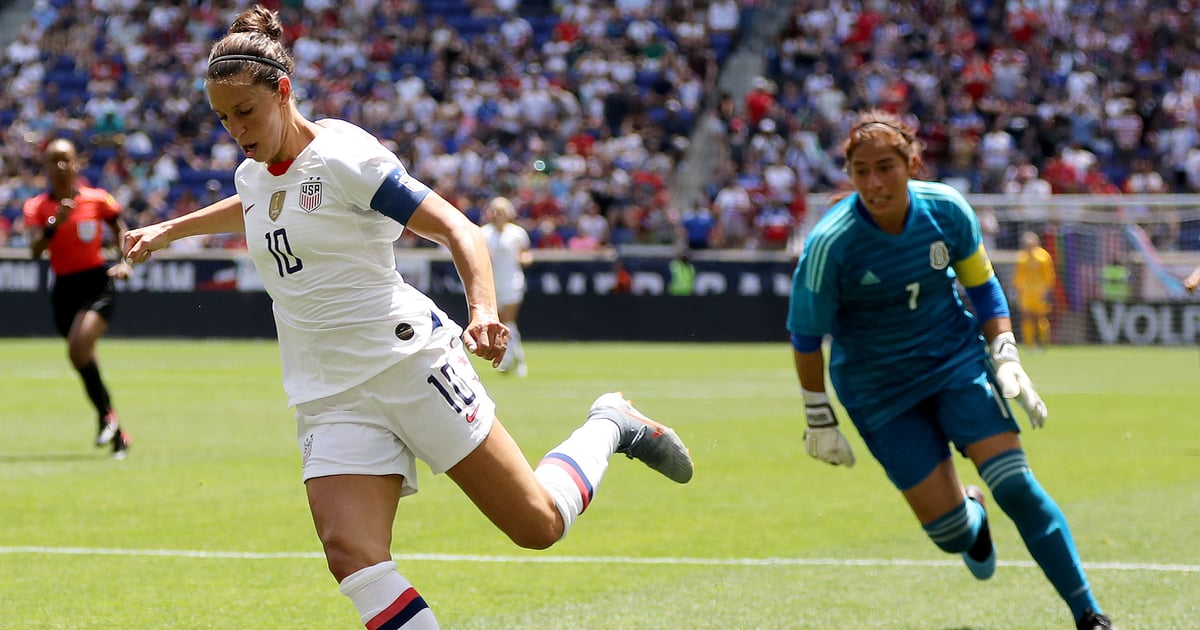
With the 2021 Summer Olympic Games in Tokyo just around the corner, now is the time to get primed on your soccer lingo. One of the most common violations that stops play during the tournament is when a player is called offside. It’s not always clear when watching the game what happened that led to that call and sounds like a complicated rule, but when you break it down, it’s really pretty simple in practice.
What’s the Official FIFA Definition of Offside?
FIFA defines being offside as being “nearer to the opponent’s goal line than both the ball and the second to last opponent.”
Who Can Be Called Offside?
To explain what this actually looks like during a game, let’s consider how it might play out between two teams we’ll call Team Pop and Team Sugar. The first thing to know is that offside is a penalty that can only be called on the team in possession of the ball, meaning it’s an offensive penalty. In this scenario, let’s say Team Pop is in possession of the ball and is trying to score. That means Team Pop is the only team that can be called offside during this play (that is, until Team Sugar gets the ball back).
Where Can an Offside Be Called on the Field?
The second thing to know is that the soccer field is divided into two halves, called the defending side and the attacking side. The attacking side is where the goal is that the team in possession of the ball is trying to score. The defending side is, well, the other side of the field. The only place on the field where an offside can be called is on the attacking side.
How Do Referees Determine What Is Offside?
The goalkeeper, who (of course) stands near the goal to keep the offensive team from scoring, is almost always the last opponent. This means the second to last opponent is the very next player on the defensive team, trying to keep the offensive team from scoring.
To determine when a player is offside, locate that last defender between the team who is trying to score (in our example that’s Team Pop) and the goal and draw an imaginary line across the field. Any Team Pop player who is past that line, between the defender and the goal, is offside. Another way to put it is, no one on the team that is trying to score at the moment (that’s Team Pop) can be closer to the goal than the player on their team who has possession of the ball.
If there is no one on the defending team, in this case Team Sugar, between the person on the team who has possession of the ball and the goalie, the position of the ball becomes the offside line and everyone on Team Pop has to stay behind the ball.
When Does Being Offside Matter?
Here’s where it gets a little bit tricky. Just being offside isn’t necessarily a problem. It’s only a violation if the person with the ball involves the player who is offside in the play. This can happen, for example, by passing the ball to that offside player.
If you’re still confused, watch this video, which breaks it down visually. Trust us, it helps!
